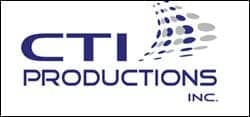Understanding—and improving—the dynamics of HTM and device manufacturer relationships
By Chris Walton, CBET-R, MS
By forging good working relationships with one another, medical device manufacturers and healthcare technology management (HTM) professionals both benefit. Even so, this relationship can be challenging at times since the two entities may be driven by differing philosophies and needs.
Having worked for more than 35 years in HTM—serving as a hospital biomed, a clinical engineering department manager, and a manufacturer service product manager—I would like to present my own perceptions from both sides. Perhaps by having a little insight, the reader may gain a better understanding of this complex relationship.
Varying Degrees of Collaboration
As with any business, the types of services that manufacturers offer customers (in this case: hospitals and clinics) vary considerably. There is a large scale in the levels of collaboration between these two entities, ranging from no collaboration between parties to maximum collaboration.
No collaboration: This is a relationship where the manufacturer has no flexibility at all in their support offerings. They may simply say that all service must be provided by the manufacturer. If the device breaks, the user must buy a new one, or send it back for repair or exchange. The biomed has no involvement in the initial troubleshooting or even in performing minor repairs.
Moderate collaboration: Somewhere in the middle on this scale is a situation where the manufacturer makes a limited set of options available, which allow the biomed department to perform minor services, such as maintenance (i.e., performance checks), and limited service (i.e., troubleshooting and repair). In this case, the manufacturer may limit training and documentation, as well as the parts they will sell.
Maximum collaboration: At the end of the scale, the manufacturer gives the biomed department a full menu of options to choose from, perhaps including:
- Service schools
- 100% service contract coverage
- Labor and materials service coverage
- Labor-only, or service-only
- Various response times for service calls: nights and weekends
- Parts-only contracts
- Remote service contracts
- Biomed screening contracts
- No contract: The biomed performs all service functions, but the manufacturer offers the HTM team technical support, parts, all documentation, special tools, software, and complete training.
Needless to say, services can be structured into all kinds of arrangements, ranging from one end of the scale to the other. Still, from the perspective of the HTM community, the desired goal is to choose the right fit.
Elements Influencing Collaboration Levels
Size and sophistication of HTM departments: No two hospital biomed or IT departments are alike—and, therefore, they don’t have the same needs. For instance, some departments are well-staffed by trained biomedical technicians, IT professionals, and clinical engineers while others—particularly those in smaller hospitals, clinics, and rural hospitals—may have limited training resources and hire technicians with only basic technical skills.
Moreover, some hospitals outsource nearly all of their equipment service. As such, hospitals with limited resources may only perform basic repairs, have numerous service contracts, or outsource service on sophisticated equipment like lab analyzers and imaging devices.
Type of equipment: The support strategy for a device can vary considerably, depending on the type and complexity of the equipment. After all, servicing a simple defibrillator is quite different than servicing a CT scanner or an infusion pump.
Manufacturer service strategy: All manufacturers have different support strategies and capabilities. For instance, some companies have a field service organization and call center; some do not. Also, many manufacturers are focused on selling medical devices and do not place emphasis on service as a revenue stream.
Most large manufacturers consider service to be a product similar to a medical device. In fact, for some types of equipment, service revenue may be more important to the manufacturer than the sale of the device.
Consider an ultrasound machine or CT scanner, which may be sold to a customer every five to 10 years. For these devices, the manufacturer relies on service to provide an ongoing revenue stream.
Service agreement decisions: Where decisions are made in a hospital will often impact the service relationship selection. For example, when decisions are made at the department level, they are typically very focused on clinical user satisfaction and product uptime. When service decisions are made at the corporate level, however, they’re often focused on costs.
Sales team influence: A manufacturer’s sales team is often willing to give service away for free. In fact, they will do almost anything to make their sales quota—and that’s important for HTM teams to know.
Usually, during a big sale, the HTM team can leverage this and negotiate warranty extensions, training, or discounted contracts. This is a key reason why biomeds/clinical engineers should always be at the table as part of the negotiating team.
On the manufacturer’s side, it behooves the sales team to work with and involve their field service organization. After all, the manufacturer field service personnel will understand the hospital’s needs much better than the sales team.
HTM Participation in Capital Purchase Committees
Savvy hospital administrators will seek HTM teams to participate in capital equipment purchasing committees. The HTM personnel can help ensure maximum collaboration with the manufacturer on such pre-purchase considerations as:
- Service training
- Service documentation
- Warranties and extended warranties
- Reliability estimates
- Cost of major expendables (i.e., “glass contracts” for x-ray units)
- Cost of ownership evaluations
- Product end-of-life or obsolescence issues (aka: how long the product is supported, etc.)
- Upgrade strategies and costs
- Support options available (i.e., remote support, all center support, parts availability, deport repair, exchange processes, etc.)
How the Hospital HTM Team Helps Manufacturers
Unfortunately, some manufacturers do not realize the value of building relationships with HTM personnel. The ways a hospital HTM team can benefit the manufacturer include:
- Providing constructive input during the purchase of new products
- Providing reliability and service feature feedback to be used for design improvements or upgrade priorities
- Acting as the first response in service calls, especially in rural locations
Forging Collaborative Relationships
Building positive relationships requires effort on both sides. Here are five ideas for HTM professionals:
- Get to know the manufacturer’s service (not sales) team. Invite them to visit you when you are not in the middle of a crisis so that they can see the everyday challenges your team faces and how they might help.
- Be willing to work with the manufacturer, despite knowing that they are not in the business of giving away products and services for free.
- Help manufacturer service teams understand the hospital work environment, including who the key players are in the support of their products. For example, introduce them to the IT folks, who will need to interface products with computer systems.
- Attend local trade show events and show interest in the manufacturer’s new products and services.
- Avoid automatically assuming an antagonistic attitude toward the manufacturer’s support team. Remember: You will get a lot more from the relationship by working together, rather than by taking a threatening approach.
Along the same lines, here are five ideas specific to manufacturers:
- Form a collaborative alliance with the hospital HTM team.
- Have members of your service team (not sales!) visit or call the biomed department during times when there is no pressing equipment problem.
- Utilize your field service team to obtain product feedback. Note: Clinical product marketing managers and R&D typically know very little about the service business or hospital service workflow.
- Participate in local biomed association monthly meetings and symposiums, which enable you to get to know people in a neutral environment.
- Get involved in and support local college biomed programs. Utilize student interns, provide equipment for their labs, donate to scholarship programs, and volunteer to give career talks to new students.
- Give training sessions of varying types: short courses at association meetings or extensive product courses. After all, hospitals have very limited training budgets.
Why Does This Relationship Matter?
More often than not, manufacturer marketing/sales/service teams and hospital HTM team members do not understand each other very well. Both parties in this relationship need to accept that their missions and objectives are different and can, in some situations, conflict.
Still, both parties can benefit from understanding the things influencing their relationship and work toward a mutually beneficial conclusion.
HTM professionals, for instance, will see: reliable support, a good working relationship with manufacturer support and engineers, confidence in product quality and reliability, and collaborative problem-solving. Further, manufacturers will enjoy repeat business, name recognition, word-of-mouth advertising, recommendations from end-users, and collaborative problem-solving. In other words, a win-win situation, indeed.
Chris Walton, CBET-R, MS, is a seasoned industry veteran, previously serving at Children’s and Providence hospitals in California and as a service product manager for Philips Healthcare and Physio-Control. Currently, he is treasurer of the Washington State Biomedical Association. Questions and comments can be directed to [email protected].





